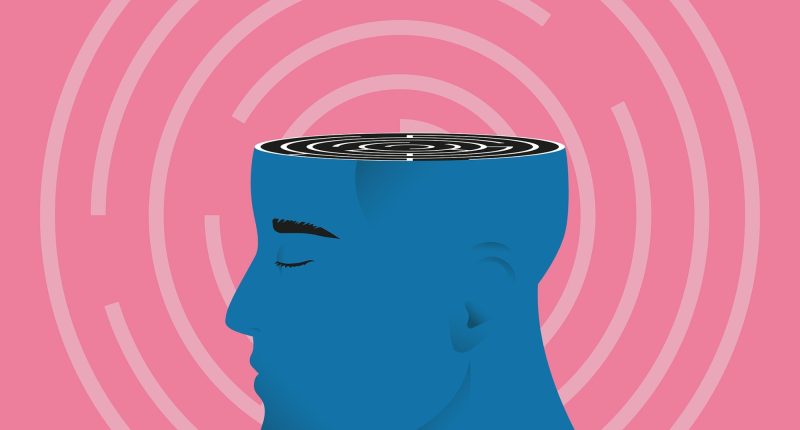
Opinions expressed by Entrepreneur contributors are their own.
Are businesses rational actors? Of course not, because humans run them. The assumption that firms are guided by logic was a dominant belief for an extended period. However, in recent years, the rise of behavioral science has displaced these assumptions by revealing the importance of cognitive bias in decision-making.
Cognitive biases are a series of shortcuts that the human mind uses to make sense of the world. However, these biases often obscure what is important and relevant, and AI alone cannot dig business leaders out of this trap. As ChatGPT admits, generative AI falls victim to the same cognitive biases because it gets its information from sources developed by humans.
Cognitive biases sprout like weeds across even the most respected and well-run companies. Although they may seem innocuous initially, they can obscure titanic threats that seem obvious in hindsight. The first step to overcoming these biases is to recognize them.
We all know the story of Blockbuster. Despite the looming threat posed by Netflix, Blockbuster, in its customer research, discovered that its patrons favored the traditional model. They appreciated the tangible feel of a DVD case and the spontaneous interactions with neighbors encountered inside the store. Interestingly, these insights were gleaned from inquiries directed at individuals already present in the store, showcasing a classic instance of confirmation bias.
In this article, my research assistant Ronan O’Callaghan and I focus on three critical biases of a much longer list, namely status quo, recency and overconfidence bias. We will examine case studies illustrating how these biases can hurt many businesses.
1. Status quo bias
Are you subscribed to a newspaper you don’t read or a subscription service you don’t watch? If so, you’re far from alone. This phenomenon, known as Status Quo Bias, reflects our inclination to stick to familiar routines despite the potential benefits we could gain from changing our behaviors. It stems from our innate fear of loss and the comfort we find in the familiar. But, this bias can be a silent killer in the business world.
Consider the European airline industry in the early ’90s. Ryanair’s CEO, Michael O’Leary, seized the opportunity presented by the radical deregulation of the EU’s airline industry throughout the 1990s. The deregulation made it easier for companies to fly between EU member states. Inspired by Southwest Airlines in the United States, O’Leary recognized that this would be an opportunity to bring the low-cost airline model throughout Europe.
While competitors clung to the status quo, Ryanair embraced change aggressively, becoming one of the first low-cost airlines in Europe. Their competitors’ failure to adapt allowed Ryanair to soar to the top and become the biggest airline in Europe today.
Still don’t see it? Ask yourself when the last time was when you changed your own 401K allocation.
Related: 7 Ways to Remove Biases From Your Decision-Making Process
2. Recency bias
Like status quo bias, recency bias traps us in the immediate past, hindering our ability to see beyond recent events. It’s the tendency to assign disproportionate importance to recent experiences. This bias grows out of recent emotions and experiences that feel more real and important than those from the past.
This bias also appears in many of our daily experiences of the world. For instance, did something make you feel terrible at the moment, only for it to feel like nothing a few weeks later? Overvaluing what seems pressing and critical at the time can often obscure more significant, longer-term trends. This bias leads to short-sighted decisions and overlooking long-term trends.
Take DoorDash’s IPO in December 2020. Investors were captivated by the company’s stock surge on day one, driven by a tripling revenue during the pandemic. However, they failed to see the bigger picture — DoorDash had yet to turn a profit since its founding in 2013. Only over the past few months had Doordash shrunk its losses. Of course, the primary reason behind this relative success was not any change by DoorDash. The pandemic and associated lockdown measures inflated demand for food services to be brought straight to customers’ doors.
When the pandemic ended, so did the revenue spike, causing a significant drop in stock prices. This case exemplifies how recency bias can blind investors and business leaders to the broader historical context and future implications.
Another example where recency bias manifests itself is in the yearly review process. You better ensure your last three months were the most impressive, or the first nine won’t matter that much.
Related: 4 Unconscious Biases That Distort Performance Reviews
3. Overconfidence bias
At first glance, status quo and recency bias may resemble overconfidence bias. But the latter has its distinct flavors — optimism bias, the illusion of control and the illusion of superiority. Overconfidence bias is pervasive, with individuals often overestimating their abilities and underestimating risks.
Consider the statistics: 65% of Americans believe they are above average in intelligence, and 50% of businesspeople claim to be in the top 10% when it comes to ethics in business—knowing that, where would you rank yourself on either of these questions? Or any other ranking against the rest of society? When we overrate our competence, it allows us to believe our ideas and plans are good without solid evidence.
Quibi, the ill-fated streaming service, is a stark example of overconfidence bias. Backed by major Hollywood studios like Disney, Quibi aimed to revolutionize streaming with short-form content. They sought to generate a subscriber base for 10-minute-long episodes that users could stream on their phones.
The idea would transform traditional media and attract attention because of its transformative appeal. However, the company’s unwavering confidence in its innovative model blinded them to the need for market validation. The failure to test public appetite for their revolutionary approach led to a mere 3 million downloads of the free version. It highlighted the danger of becoming so enamored with an idea that reality is obscured.
Recognizing and mitigating cognitive biases is crucial for making informed decisions. Status quo, recency, and overconfidence biases are formidable adversaries. Ultimately, these biases only scratch the surface of how cognitive biases impact business leadership. But what unites these biases is that through cultivating awareness and grounding actions in deep research, business leaders can overcome these pitfalls and beat their own brains.
This article is from Entrepreneur.com









